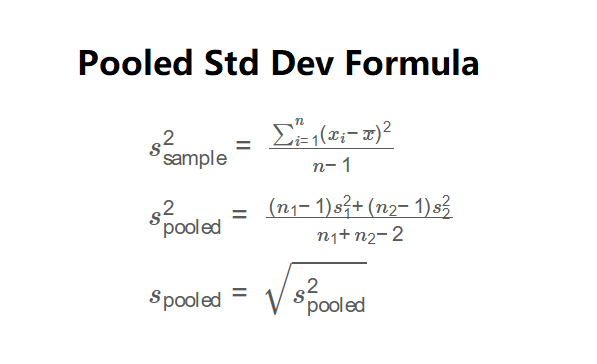 Home
Home
 Back
Back

Definition: The Pooled Standard Deviation Calculator computes the pooled standard deviation, which combines the standard deviations of two datasets to estimate the common variability, assuming equal variances.
Purpose: This tool is used in statistics, particularly in t-tests, to compare means of two groups by pooling their variances for a more robust estimate.
The calculator uses the following formulas:
\( s_{\text{sample}}^2 = \frac{\sum_{i=1}^n (x_i - \bar{x})^2}{n - 1} \)
\( s_{\text{pooled}}^2 = \frac{(n_1 - 1)s_1^2 + (n_2 - 1)s_2^2}{n_1 + n_2 - 2} \)
\( s_{\text{pooled}} = \sqrt{s_{\text{pooled}}^2} \)
where \( s_1^2, s_2^2 \) are the sample variances, \( n_1, n_2 \) are the sample sizes, and \( \bar{x} \) is the mean of each dataset.
Steps:
The pooled standard deviation is essential for:
Example: Calculate the pooled standard deviation for Dataset A: [5, 7, 9, 11, 13] and Dataset B: [4, 6, 8, 10, 12].
Q: What is pooled standard deviation?
A: It’s a combined measure of variability for two datasets, assuming equal variances, calculated by pooling their sample variances.
Q: Why require at least 2 data points per dataset?
A: Variance is undefined for a single data point, as it requires at least one degree of freedom (\( n-1 \)).
Q: When is pooled standard deviation used?
A: It’s commonly used in two-sample t-tests to compare means of two groups, assuming their variances are equal.